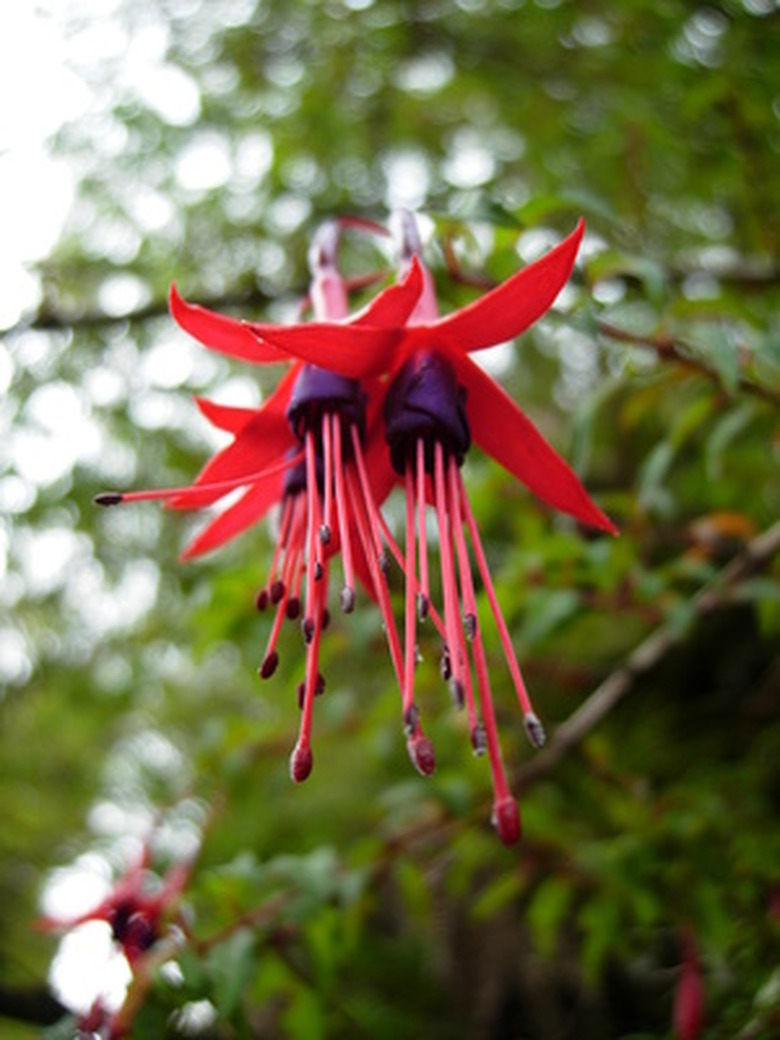What Is A Fuschia Flowering Tree?
While small fuchsia plants may provide suitable growth habits to grace your porch and patio, large fuchsia trees (Schotia brachypetala) enhance outdoor areas of your yard and landscape. These attractive trees produce a burst of deeply colored blossoms, making them a suitable plant for ornamental purposes. These semi-tropical, flowering trees require appropriate conditions to grow and flourish. Like other medium to large trees, fuchsia trees add a sense of permanence and durability to a landscape design.
Description
Fuchsia flowering trees reach a height of between 35- and 50-feet tall. At maturity, they form a rounded crown with their dense canopy of evergreen leaves. Young leaves appear slightly reddish, turning glossy green as they grow. Fuchsia trees blossom in the spring, displaying masses of deep red flowers with tiny petals. The centers of these flowers form small cups that contain nectar.
- While small fuchsia plants may provide suitable growth habits to grace your porch and patio, large fuchsia trees (Schotia brachypetala) enhance outdoor areas of your yard and landscape.
- These attractive trees produce a burst of deeply colored blossoms, making them a suitable plant for ornamental purposes.
Origin
A native tree of South Africa, this ornamental tree now thrives in many semi-tropical areas in the southern United States, including Florida and Texas. In its native country, the flowering tree grows in areas south of the Zambezi River.
Requirements
Flowering fuchsia trees require sunny locations in warm climates. They can withstand occasional light freezes, tolerating temperatures near 23 degrees F. These trees prefer deep, sandy soils with plenty of moisture. Decomposed compost and annual applications of fertilizer supply adequate amounts of soil nutrients.
Propagation
Fuchsia flowering trees produce seeds that grow into new trees. The seeds form in small pods during the late summer and fall months, falling from the tree to begin sprouting the following spring. These trees also grow quickly from vegetative cuttings. These trees grow rapidly, often blossoming within five years of planting.
- A native tree of South Africa, this ornamental tree now thrives in many semi-tropical areas in the southern United States, including Florida and Texas.
- Flowering fuchsia trees require sunny locations in warm climates.
Uses
These flowering trees provide many uses in semi-tropical landscapes. In addition to their ornamental function, flowering fuchsia trees attract a variety of animals and insects, including birds. Humming birds enjoy the nectar from the colorful flowers, while other types of birds feed on the insects that gather the nectar. In its native habitat, the quality timber provides a suitable wood for furniture making, while the seeds supply a source of food for wildlife and human consumption.
References
- Plantz Africa: Schotia Brachypetala
- "Botanica's Gardening Encyclopedia"; Susan Page 2001
